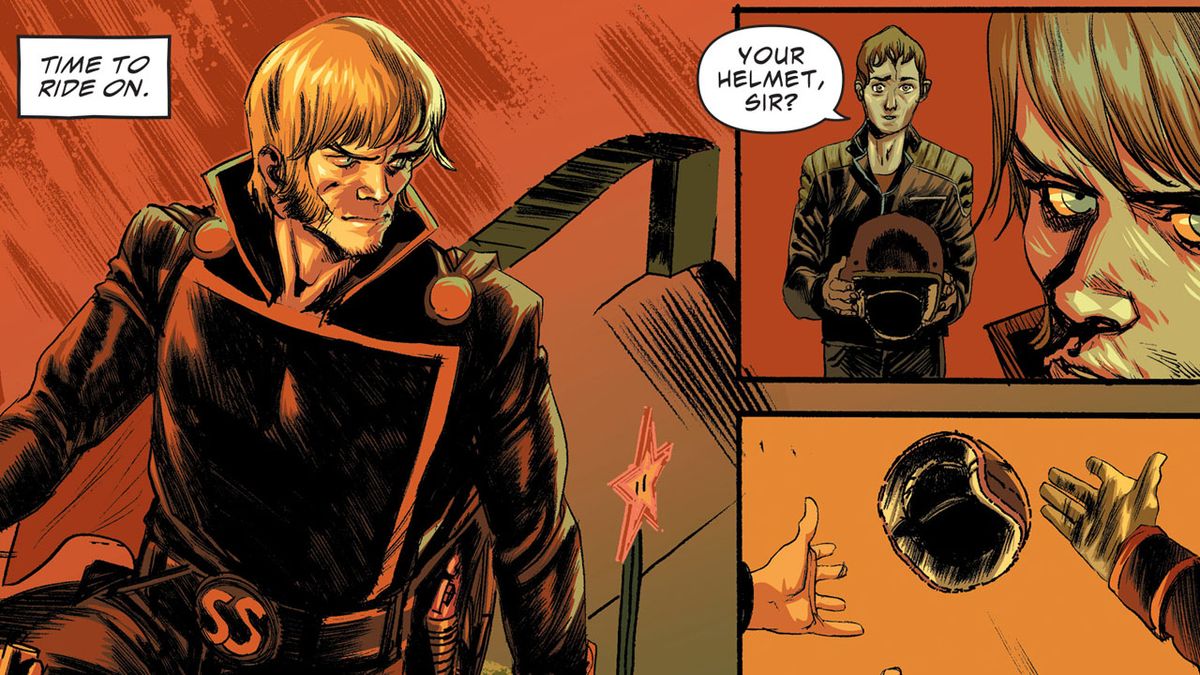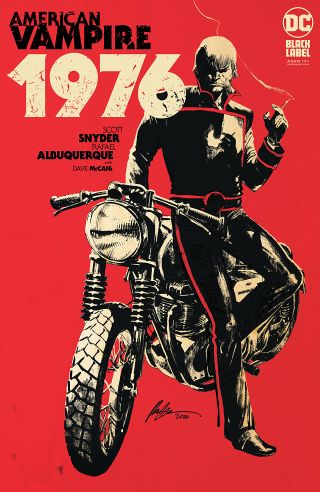Best Shots review: American Vampire 1976 #1 "delivers a mixture of swagger and chills"
Scott Snyder and Rafael Albuquerque return to American Vampire with 1976

It's been almost five years since Scott Snyder and Rafael Albuquerque took readers on a ride out west with Skinner Sweet, Pearl Jones, and the world of American Vampire. Since it last left off in the cold war space race of the '60s, we now jump ahead to the USA's bicentennial with American Vampire 1976 #1 (of 9).
And while the undead may not have aged, has this series?
Written by Scott Snyder
Art by Raphael Albuquerque and Dave McCaig
Lettering by Jared K. Fletcher
Published by DC's Black Label imprint
'Rama Rating: 7 out of 10
The story picks up with Skinner struggling with life as a mortal while the members of the Vassals of the Morning Star continue to pursue the Gray Trader and his minions as they seek to unleash the Beast from the bowels of hell.
For Skinner, dealing with mortality comes in the form of being a carnival motorcycle daredevil. For Pearl, Felica, and the other remaining members of the VMS, it's a last-ditch effort to leverage the Iskakku that they acquired years before to help them put an end to the Beast.
But things haven't worked the way they hoped and now they need help from the Council of Firsts – a hidden cabal who holds the secrets Pearl needs to unlock the Blood of Light. To find them, however, Pearl and her compatriots need to hijack a train and steal a map that will lead them to the council, and who better than Skinner Sweet to help with the heist? As we approach the finale of American Vampire, there is no mistaking Snyder is setting the table to come full circle, bringing Sweet back to his wild west roots. But whether he'll return to unlife as a vampire or the grave itself remains to be seen.

Artistically, Albuquerque and Dave McCaig continue to capture the same intensity of the characters and convey it in each panel as before. The heavy inks and fiery colors never let readers forget about the hellish backdrop for this story. In particular, the opening scene with Skinner preparing for and completing his explosive motorcycle jump is vaguely reminiscent of Johnny Blaze – another damned daredevil of comic infamy. And while this artistic duo continues delivering a mixture of swagger and chills in this issue as in the past, their greatest strength remains the one-to-one exchanges between its almost-human characters: Pearl and Skinner Sweet.
Overall, the story jumps right back into the action with the same cast of familiar characters. The dialogue maintains its razor's edge, and the characteristic 'big story' comes through laying the foundations for the rest of the series to build off of. And characteristic of Snyder, he takes readers on a deep dive into his theme of interest, namely, the cyclical nature of history, which resonates in ways contemporary readers will readily connect in the present moment. Just as Skinner relates the issues of turmoil, division, and cynicism within the US from the late '60s and '70s, it seems Snyder invites readers to question whether or not the same might be said for the present moment, thus reinforcing the circular and inescapable nature of time. We prove Synder's point true when we read these opening pages with Skinner and connect what he is saying to our own present experiences.
Comic deals, prizes and latest news
Get the best comic news, insights, opinions, analysis and more!
For a story that takes place in a time when many readers may not have been alive or old enough to remember well, it's an effective technique to draw people into a world within the first few pages.



Of course, the issue is not without some challenges. Arguably the greatest hurdle readers will face getting back into this series will be just how interconnected it is to the previous cycles of American Vampire. Readers who don't take the time to reread everything that came before are going to miss a lot of context needed to help understand and appreciate fully what's driving this first issue of the last cycle of the series. The twist surprise at the end of this issue feels important because it is, but it's the sort of moment that fails to deliver the same impact if the details of the past aren't at the forefront of readers' memories. Even long-time fans would do well to refresh themselves before tackling this first issue in order to get the most out of it.
Given that this 9-issue series aims to wrap up Snyder's first break in comic books, however, it's unlikely few readers are jumping into American Vampire 1976 without having the requisite back-reading behind them. But if that's you? Do your homework before taking a bite of this series.
Dr. Forrest Helvie is a professor by day and both consumer and critic of comic books by night. Prof. Helvie can frequently be found writing comic book reviews for Newsarama, but he has also contributed to a wide range of publications and research presentations. Whether it's through in-depth interviews with writers and artists behind your favorite works, or critical analysis of them through academic essays, Prof. Helvie is always looking to help you better understand and appreciate the comic book that's in your hands.
Most Popular



